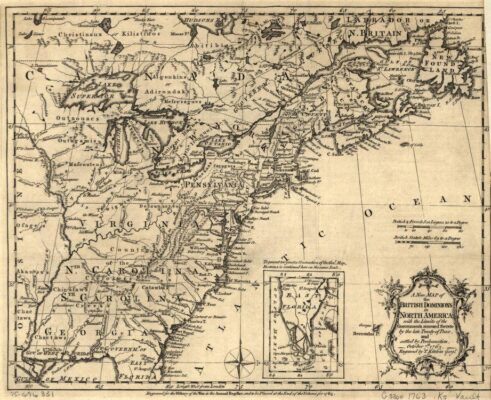The Proclamation of 1763: A Turning Point in Colonial America
The Royal Proclamation of 1763, issued by King George III on October 7, 1763, was a momentous decree with far-reaching consequences for British North America. It came on the heels of the Treaty of Paris, which ended the French and Indian War and ceded vast French territories to Great Britain. The Proclamation aimed to address numerous issues in the aftermath of the war, including:
1. Establishing Colonial Boundaries:
- Appalachian Mountains as the Boundary: The Proclamation drew a boundary line along the crest of the Appalachian Mountains, declaring the land west of it an “Indian Reserve.” This effectively halted westward expansion of British colonies and aimed to prevent further conflict with Native Americans whose lands had been disrupted by the war.
- Regulation of Colonial Settlement: It regulated colonial settlement within the established boundaries, requiring colonists to obtain land through official channels and not directly from Native Americans. This centralized control over land purchases was to prevent abuses and conflicts.

2. Establishing New Governments:
- Quebec, East & West Florida: The Proclamation created new British colonies in former French territories: Quebec for French Canadians and West Florida and East Florida for English settlers. This aimed to address distinct cultural and administrative needs.
3. Trade and Relations with Native Americans:
- Trade Regulations: The Proclamation attempted to regulate trade with Native Americans, requiring official licenses and fair prices to avoid exploitation and resentment.
- Respect for Native Land Rights: It formally recognized the existing land rights of Native American tribes and prohibited encroachment on their lands without treaty agreements.
Significance and Impact:
The Proclamation of 1763 had a profound impact on colonial America:
- Colonist Discontent: While intended to appease Native Americans and maintain imperial control, it fueled discontent among colonial land speculators and settlers eager to expand westward. This contributed to growing resentment towards British authority and laid the groundwork for future tensions culminating in the American Revolution.
- Native American Perspective: For Native Americans, the Proclamation offered recognition of their land rights but ultimately proved ineffective in preventing encroachment and displacement. It became a point of reference in asserting land claims and advocating for fair treatment in subsequent decades.
- Legacies in Land Law and Indigenous Rights: The Proclamation’s recognition of Native land rights served as a legal precedent in later treaties and court cases concerning Indigenous landownership in Canada and the United States.
Further Information:
To delve deeper, you can explore the following resources:
- The full text of the Proclamation: https://www.tcss.net/cms/lib/AL01001644/Centricity/Domain/769/American%20Revolution%20Document%20Packet.pdf
- A detailed analysis: https://kids.britannica.com/students/article/Proclamation-of-1763/631453
- Perspectives from the Native American viewpoint: https://www.landofthebrave.info/proclamation-of-1763.htm
I hope this information provides a comprehensive overview of the Proclamation of 1763 and its significance. Feel free to ask any further questions you may have!

